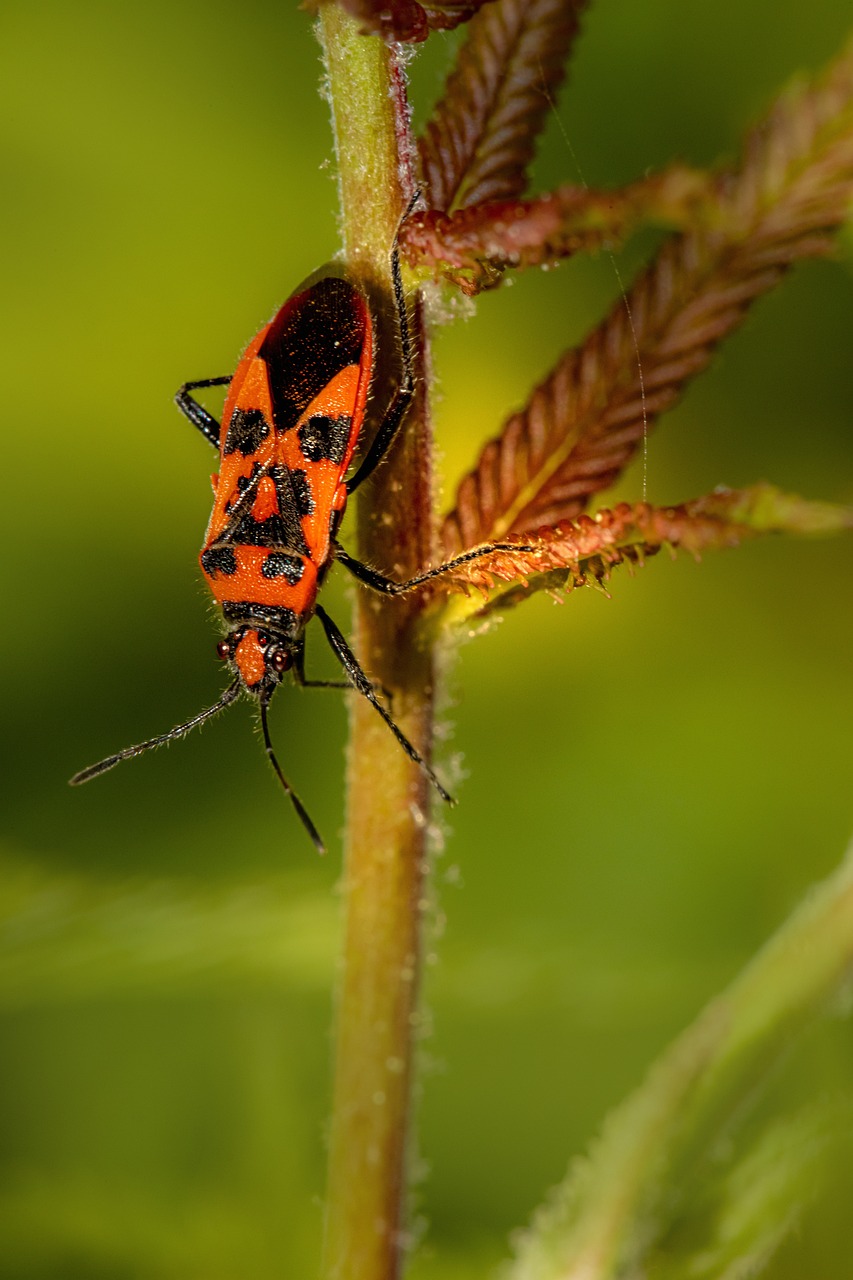The Firebug (Pyrrhocoris apterus) is a common and visually striking insect known for its bright red and black coloration. This species belongs to the family Pyrrhocoridae, and is easily recognizable due to its unique pattern, making it a popular subject of interest for nature enthusiasts and photographers.
Description
- Appearance: The firebug measures around 7 to 12 mm in length. It is characterized by a vivid red and black coloration with distinctive patterns on its back. The most recognizable features are two large black spots on a red background near the head, along with a black X-shaped pattern on its elytra (hardened forewings). Unlike many other true bugs, it has a flattened body shape.
- Wings: While some firebugs have fully developed wings, many are wingless or have only partial wings (hence the species name “apterus,” which means “wingless”).
Distribution and Habitat
- Geographical Range: The firebug is widespread throughout Europe, particularly in Central and Southern Europe, and extends to parts of Asia, including India and China. It has also been introduced to North America.
- Preferred Habitats: It favors warm, dry environments and is often found on the ground in gardens, parks, meadows, and other areas with lime trees, mallows, and other plants they feed on. Firebugs often congregate in large groups on tree trunks, leaf litter, or sunny walls.
Behavior and Ecology
- Feeding Habits: Firebugs are sap-suckers and primarily feed on the seeds of plants such as linden trees (Tilia species), mallows (Malva species), and hibiscus. They use their piercing-sucking mouthparts to extract sap from seeds, leaves, and stems.
- Social Behavior: Firebugs are highly gregarious, often seen clustering together in large numbers, especially during sunny days in early spring. This behavior is believed to help them warm up and protect against predators.
Life Cycle
- Reproduction: Mating usually occurs in spring, with the male and female often staying coupled for extended periods, which can last several hours or even days. This extended copulation is a form of mate guarding.
- Development: Females lay their eggs in the soil or leaf litter. After hatching, nymphs go through several stages (instars) before reaching adulthood. Nymphs are similar in appearance to adults but lack wings and exhibit a more uniform red color.
- Lifespan: Firebugs can live up to one year, depending on environmental conditions.
Interesting Facts
- Name Origin: The common name “firebug” comes from its bright red coloration, which resembles the color of fire.
- Defense Mechanisms: The bright red and black coloration serves as a warning to predators (aposematism) that they may be toxic or unpalatable. However, firebugs are not dangerous to humans or pets.
- Non-Migratory: Unlike some insects, firebugs do not migrate and typically stay close to their preferred habitat year-round.
Conservation Status
- Population: The firebug is abundant and not considered endangered. It thrives in human-modified landscapes and is common across its range.
- Conservation Efforts: No specific conservation measures are required for this species, as it is widespread and adaptable to various habitats.
The Firebug (Pyrrhocoris apterus) is a fascinating insect that plays a role in the ecosystem by helping to decompose plant material and control seed populations. Its bright colors and distinctive patterns make it easy to spot, adding a touch of color to gardens and green spaces.
Visited 876 times, 5 visit(s) today
Views: 1888
Subscribe to the newsletter:
